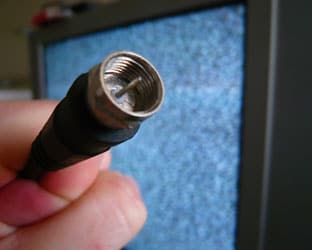As the debate over television spectrum continues, a coalition of broadcasters says that not only is the broadcast one-to-many distribution model a more efficient use of this limited resource, it will bring in more cash for the federal government. The Coalition for Free TV and Broadband has joined with Sinclair Broadcast Group to push broadcast overlay technology to make it all possible.
The Coalition explained briefly that a “’Broadcast Overlay’ utilizes high power/high tower television broadcast facilities to provide large area coverage for ‘point-to-multipoint’ (broadcast) data/services capable of being converged with ‘point-to-point’ (unicast) data/services provided by other wireless operators.”
The Coalition argues that there is no amount of spectrum that will be able to meet increasing demand utilizing the one-to-one model that wireless companies offer.
Instead of getting less than $20B net from a one-time spectrum auction to wireless companies (or much less than $10B net as some studies have indicated), the Coalition says its proposal will bring in over $60B in auxiliary service fees while strengthening broadcast to continue providing its vital local service into the future.
Rajiv Hazaray of Business Analytix stated “This first of a kind paper quantifies the superiority of a mobile-friendly ‘Broadcast Overlay’ service versus the current policy choice of spectrum re-allocation and auction. With spectrum remaining in the hands of broadcasters to address the growing demand for mobile data, they also create tremendous consumer and taxpayer value from mobile IP services. The demands of a mobile data ecosystem are too diverse to be served only by cellular networks and commercial wireless operators. Different kinds of mobile data traffic require different networks and different service models.”
Mark Aitken, Vice President of Advanced Technology for Sinclair Broadcast Group, added, “A lot of the discussions about ‘Next Generation’ broadcast technologies bring ‘Broadcast Overlay’ architectures to the front of possibilities. A ‘Broadcast Overlay’ service that is technically compatible with commercial wireless networks would allow users to consume more data at a lower cost with a higher quality of service and bring broadcasters new revenue opportunities through new ancillary services. Foregoing auctions of television broadcast spectrum would mean a WIN-WIN-WIN for the U.S. Treasury-consumers-broadcasters under this kind of a plan.”
In conclusion, Irwin Podhajser, the Chairman of the Coalition said, “We imagine a future where the American people have more choices, not less. We imagine a future where consumers can get faster, better and cheaper video delivery to their computers, cell phones and tablets. We imagine a future that wireless companies could only dream of providing, but we as broadcasters are ready to make that dream a reality.”
The full report can be found at this website: http://www.FreeTVandBroadband.org




